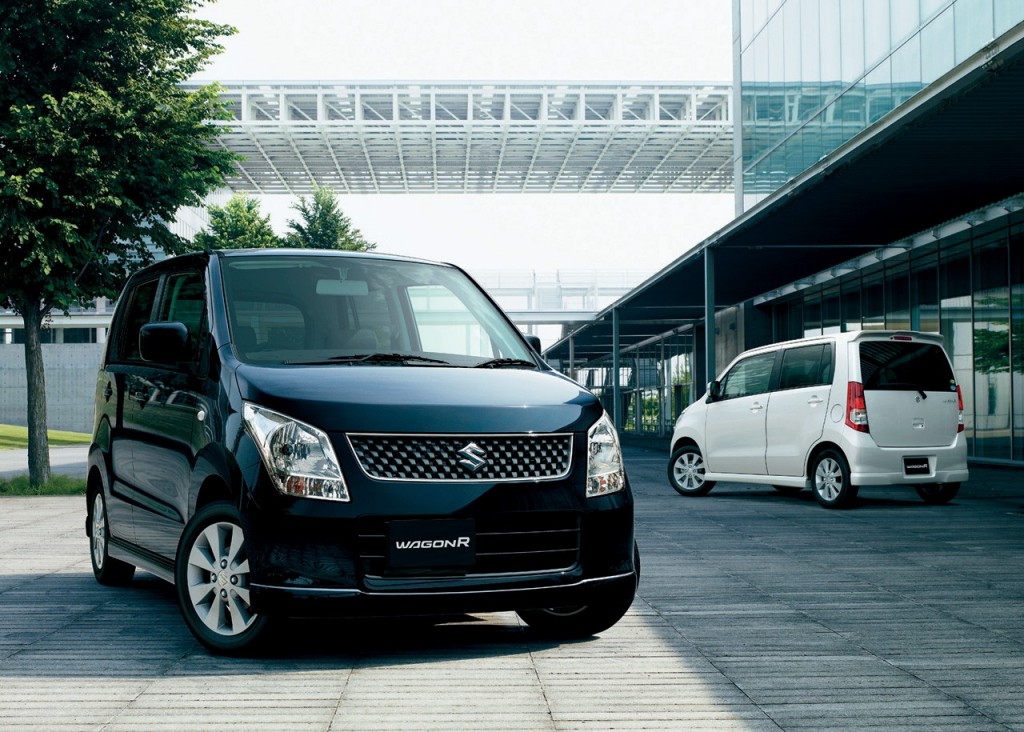
Suzuki Wagon R, Japan's highest selling vehicle

Suzuki Wagon R, Japan's highest selling vehicle
If there's one thing that illustrates the culture difference between the United States and Japan better than anything else, it's the cars everyone drives.
In the U.S, the Ford F-Series truck has dominated the sales charts for quarter of a century. The smallest engine available is a 3.5-liter EcoBoost V6 making 365 horsepower (the V8 range starts at 348 horsepower), the smallest body available is 211 inches long and it weighs in at 4685 lbs. Combined fuel economy with the EcoBoost is 19mpg.
Japan's biggest selling car since 2003 is Suzuki's Wagon R kei-class car. Like all kei cars, it uses a 660cc gasoline engine with no more than 63 horsepower, and at 134 inches long and 1650 lbs it's a fraction of the F-150's size.
Kei cars are big in Japan though, if not in size then certainly in sales. Several tax breaks, good fuel economy and strict regulations on parking make them far cheaper to run than regular cars for most Japanese motorists.
Those tax breaks come with strict limits on dimensions and power, though: Kei cars can be no more than 11.2 feet long, 4.2 feet wide, and 6.6 feet tall, with power of only 63 hp. Within those constraints, some kei cars offer turbocharging, all-wheel-drive, sequential gearboxes, and other advanced technology usually found in much larger vehicles.
According to new figures by The Japan Mini Vehicles Association, the proportion of Japanese households now owning kei cars has risen to more than 50 percent for the first time since the survey began in 1986.
Though designed for the city, the survey has revealed that kei cars are also bought in large numbers in rural areas, where many people use kei vans and kei pickup trucks to go about their daily business, putting paid to the assumption the cars aren't suitable once outside of city limits. Indeed, Tokyo has the lowest number of kei car households, at only 11 out of 100. Highest is the Tottori Prefecture - 98 from every 100 households own a kei car there.
There are several reasons kei car ownership is now so high. Gas prices are a large influence, and with a CVT and stop/start-equipped Wagon R achieving a staggering 58mpg on Japan's "10.15 Mode" fuel economy test you can see the appeal. Japan is also suffering from an unsteady economy, and cars are seen as far less of a status symbol then they are in America too - so driving a tiny car isn't looked down upon.
Even with rising gas prices we can't see Kei cars catching on in the States, where cars are very much status symbols. The 2012 smart fortwo is still the smallest car on U.S. roads and even that uses a 1.0-liter engine. The only true kei car we've seen is the 2012 Mitsubishi i electric car, but that was widened to make it more suitable for the American market.
Looks like the F-Series will top the charts for a few more years...
+++++++++++













